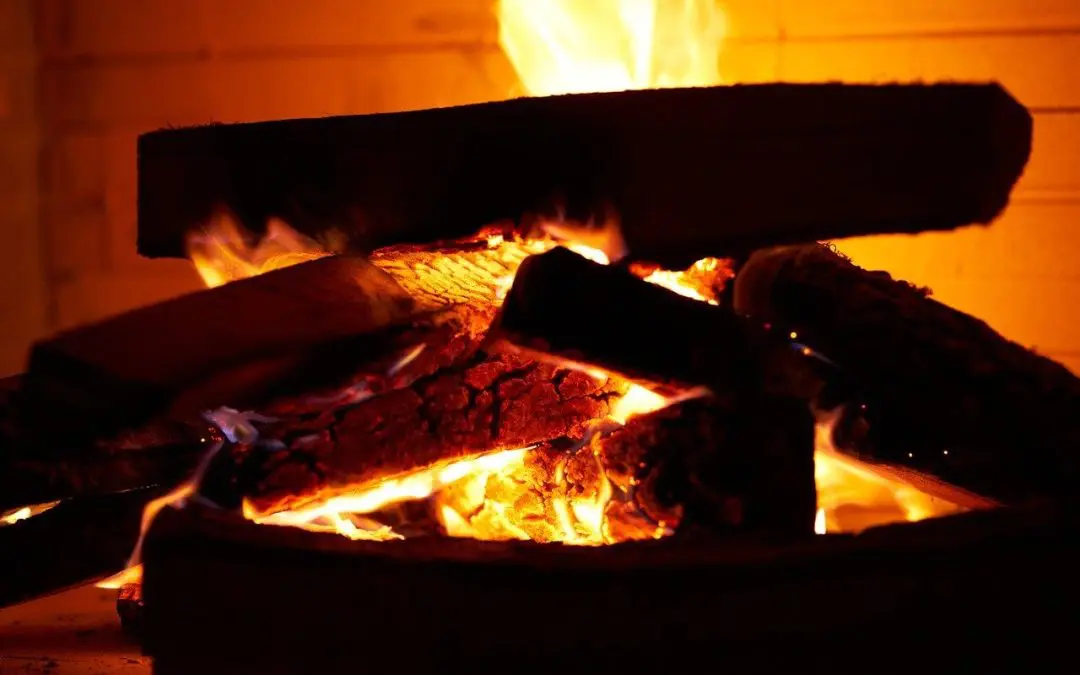Fireplaces are cozy centerpieces for any home, offering warmth and ambiance on chilly days. Whether you have a wood-burning or gas fireplace, regular maintenance and safety practices are crucial to keep them operating efficiently and safely. In this blog, we’ll offer some essential cleaning and safety tips for fireplaces and discuss the importance of carbon monoxide detectors.
Wood Fireplace Safety and Cleaning
Wood fireplaces require diligent care to prevent creosote buildup and ensure safe operation. Creosote is a highly flammable substance that can accumulate in your chimney and pose a fire hazard. Here’s how to keep your wood fireplace in top condition:
Annual Chimney Inspections: Have your chimney inspected by a certified professional at least once a year. They will check for any blockages, creosote buildup, and structural damage.
Regular Cleaning: Clean your fireplace regularly to remove ash and debris. Wait at least 24 hours after the last fire to ensure the ashes are completely cool. Use a fireplace shovel to scoop out the ashes and a brush to clean the firebox. Dispose of ashes in a metal container with a lid, keeping it outside and away from combustible materials.
Burn Seasoned Hardwood: Only burn seasoned hardwoods like oak, maple, or birch. These woods produce less creosote and burn more efficiently than softwoods or unseasoned wood. Avoid burning treated wood, painted wood, or household trash, which can release harmful chemicals.
Use a Fireplace Screen: Always use a fireplace screen to prevent sparks and embers from escaping the firebox and igniting nearby materials.
Maintain Proper Airflow: Keep the damper open before lighting a fire and until the fire is completely out. Proper airflow helps reduce creosote buildup and allows smoke to exit the chimney.
Safety Tips for Fireplaces: Gas Fireplaces
Gas fireplaces offer convenience and ease of use but require regular maintenance for safe operation. Follow these tips to keep your gas fireplace in excellent condition:
Annual Inspections: Schedule an annual inspection with a certified technician. They will check for gas leaks, inspect the burner and pilot light, and verify that the venting system is functioning correctly.
Inspect and Clean Logs: Periodically inspect the ceramic logs for cracks or damage. Dust and debris can accumulate on the logs, so clean them with a soft brush. Avoid moving the logs, as their placement affects the burner’s efficiency and safety.
Check Ventilation: Make sure the venting system is free of obstructions and that the exterior vent cap is clear of debris. Proper ventilation is essential for the safe operation of a gas fireplace and prevents carbon monoxide buildup.
Test the Ignition System: Regularly test the ignition system. If you notice issues with lighting the fireplace, contact a professional technician.
The Importance of Carbon Monoxide Detectors
Carbon monoxide (CO) is a colorless, odorless gas that can be deadly. Both wood and gas fireplaces can produce CO if not properly ventilated. Installing carbon monoxide detectors in your home is essential for safety. Here’s what you need to know:
Install CO Detectors: Place carbon monoxide detectors on every level of your home, especially near sleeping areas and the fireplace. Follow the manufacturer’s guidelines for installation.
Regular Testing: Test your CO detectors monthly. Replace batteries at least once a year or more frequently if the detector signals low battery power.
Replacement: CO detectors have a limited lifespan, typically 5 to 7 years. Check the manufacturer’s instructions and replace detectors as needed.
Emergency Plan: Develop an emergency plan with your family. In the event of a CO alarm, everyone should know how to exit the home quickly and safely.
Maintaining your wood or gas fireplace is crucial for safety and efficiency. By following these tips and incorporating regular inspections and cleanings, you’ll enjoy your fireplace with peace of mind. Don’t forget to install and maintain carbon monoxide detectors to protect your home and loved ones.
FAQs About Safety Tips for Fireplaces
How often should I clean my wood fireplace?
Clean your wood fireplace after every use to remove ashes and debris. Schedule a professional chimney cleaning at least once a year.
How often should I have my gas fireplace inspected?
Have your gas fireplace inspected by a certified technician annually for safe and efficient operation.
Can I clean the glass doors of my gas fireplace myself?
Yes, clean the glass doors using a fireplace glass cleaner and a soft cloth. Always follow the manufacturer’s cleaning instructions.
What should I do if my carbon monoxide detector goes off?
If your CO detector sounds an alarm, immediately evacuate your home and call emergency services. Do not re-enter until it is safe and the source of the CO has been identified and resolved.
Aztec Home Inspections Inc. provides home inspections for Harrisonburg and Charlottesville, VA and the surrounding areas. Contact us to book an inspection.

